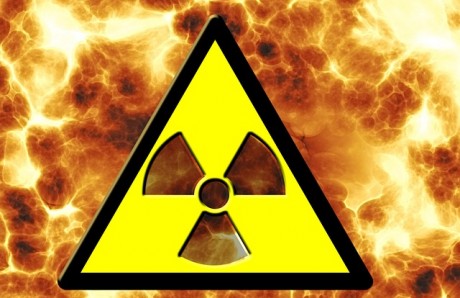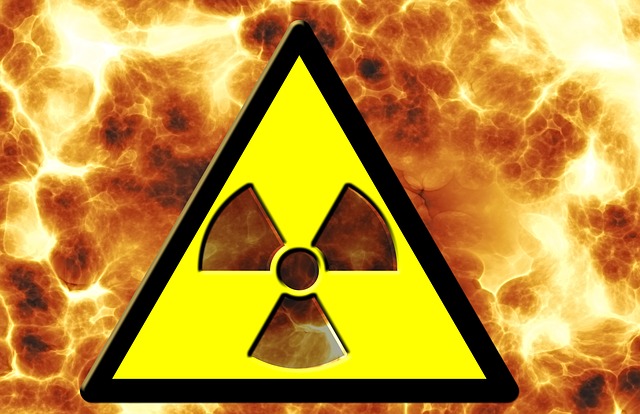 Six years ago, an absolutely devastating tsunami caused a triple meltdown at Japan’s Fukushima nuclear power facility. It was the worst environmental disaster in all of human history, and even though six years have passed since that time, nobody knows where the three melted cores are. Just recently, authorities believe that they spotted some melted fuel underneath reactor 2, but even from a distance the level of nuclear radiation that was detected was being described as “unimaginable”. Essentially what we are talking about are three enormous “dirty bombs” that are continuously emitting tremendous amounts of nuclear radiation into the air, water and soil. Some of the radioactive elements that are being released have half-lives that are measured in tens of thousands of years, and so the poisonous effect of these “dirty bombs” could potentially be with us for generation after generation.
Six years ago, an absolutely devastating tsunami caused a triple meltdown at Japan’s Fukushima nuclear power facility. It was the worst environmental disaster in all of human history, and even though six years have passed since that time, nobody knows where the three melted cores are. Just recently, authorities believe that they spotted some melted fuel underneath reactor 2, but even from a distance the level of nuclear radiation that was detected was being described as “unimaginable”. Essentially what we are talking about are three enormous “dirty bombs” that are continuously emitting tremendous amounts of nuclear radiation into the air, water and soil. Some of the radioactive elements that are being released have half-lives that are measured in tens of thousands of years, and so the poisonous effect of these “dirty bombs” could potentially be with us for generation after generation.
Personally, I don’t know why the big mainstream news outlets in the U.S. are almost entirely ignoring Fukushima these days. Fox News did a story on the “unimaginable” radiation at Fukushima just a few days ago, but that was about it.
To me, it is certainly newsworthy that nuclear radiation inside reactor 2 at Fukushima is at the highest level ever recorded…
Radiation levels inside a damaged reactor at Japan’s Fukushima nuclear plant have hit a record high, and are the worst since the plant suffered a triple meltdown nearly six years ago. The latest readings now pose a serious challenge as officials prepare to dismantle the stricken facility.
Radiation levels inside the containment vessel of reactor No. 2 at Fukushima has reached 530 sieverts per hour—a figure described by experts as “unimaginable.”
Previously, the highest level of radiation measured at Fukushima was 73 sieverts per hour, and just a small fraction of that amount would be fatal to most humans…
Needless to say, this plant is not fit for human life. Just one dose of a single sievert is enough to cause radiation sickness and nausea. Exposure to four to five sieverts would kill about half of those exposed to it within a month, while a single dose of 10 sieverts is enough to kill a person within weeks.
At 530 sieverts per hour, the radiation is so intense that even robots can only last for a couple of hours in that environment. The Japanese hope to eventually remove the melted fuel from these reactors someday, but first they have to figure out if it is even possible.
And the truth is that the level of radiation in reactor 2 may actually be far higher than 530 sieverts per hour. That is because the recent reading was taken “some distance from the melted fuel”…
The 530 sievert reading was recorded some distance from the melted fuel, so in reality it could be 10 times higher than recorded, said Hideyuki Ban, co-director of Citizens’ Nuclear Information Center.
Experts are also warning that the levels of radiation may be much higher than 530 sieverts per hour in reactors 1 and 3. Nobody knows, because the melted fuel in those reactors has not even been located yet.
Even though so much time has gone by, there is still very much an urgency to this crisis. In a newly published article, Mike Adams of Natural News explained why this is the case…
In effect, Fukushima has become the world’s largest dirty bomb, and the remaining fuel rods could explode (achieve criticality) at any moment. Even right now, the radiation is so intense that robots built to explore the wreckage can only survive for a few hours before their circuits are destroyed. Thus, there’s almost no scenario in which Japan, Tepco or anybody in the world figures out how to clean up the wreckage, reclaim the melting fuel rods and reestablish control over the nuclear reactions that are still ongoing.
You can’t even successfully build a containment vessel on top of it all because the melting nuclear fuel has already burned a massive hole in the floor and is melting its way into the ground water.
What most people don’t understand is that the melted nuclear fuel under Fukushima is going to be with us for a very, very long time. Some of the fuel rods contained plutonium-239, and plutonium-239 has a half-life of approximately 24,000 years…
Do they think a one-meter hole magically appears in nuclear containment vessels due to random chance? No, it’s melting fuel rods, you morons. And some of that fuel is MOX fuel, which contains plutonium-239 that boasts a half life of 24,000 years. So sometime in the year 26000 A.D. the Fukushima nightmare will be HALF as toxic as it is right now. What a wonderful, progressive future to look forward to, eh?
Plutonium-239 is one of the most dangerous substances known to humanity. As nuclear expert Steven C. Jones once explained, it would not take much plutonium-239 to kill every man, woman and child on the entire planet…
To give one an example of how lethal radiation is, one pound of plutonium evenly distributed into everyone’s lungs would kill every man, woman and child on Earth. There are literally “tons” of radioactive plutonium (among other radioactive elements) that have been released into the air and ocean environments since March 11th. Another critical fact to remember is that radioactive plutonium, for example, remains lethal (killing life) for thousands years as it has a half-life of 24,000 years. Some other radioactive elements such as uranium have a half-life of 4.47 billion years.
And remember, more radioactive material is being released from Fukushima every single day. The following comes from an interview with Kevin Kamps, the radioactive waste monitor at Beyond Nuclear…
There are claims that “it’s all contained, don’t worry about it.” It is indisputable that there is a daily flow of radioactively contaminated groundwater into the ocean. The figures something like 80,000 gallons per day of relatively low-level radioactive waste water. Then you’ve got those storage tanks – we’re talking 800,000 tons of highly radioactive water stored in tanks. Every day they pour a hundred tons of water on each of these three melted down cores. Sometimes they lose those tanks. They leak, they overflow – it is an ongoing catastrophe.
Are you starting to understand how serious this is?
Once nuclear material escapes from Fukushima, it literally gets distributed all over the planet.
That means that it is getting into our air, our water and our food supply.
And I find it extremely interesting that the EPA was moving to dramatically raise the “safe limits” on radioactivity in our drinking water right at the end of the Obama administration. The following comes from a Public Employees for Environmental Responsibility press release dated December 22, 2016…
“Following Japan’s Fukushima meltdown in 2011, EPA’s claims that no radioactivity could reach the U.S. at levels of concern were contradicted by its own rainwater measurements showing contamination from Fukushima throughout the U.S. well above Safe Drinking Water Act limits. In reaction, EPA prepared new limits 1000s of times higher than even the Fukushima rainwater because ‘EPA experienced major difficulties conveying to the public that the detected levels…were not of immediate concern for public health.’”
Why in the world would the EPA do that?
Here are some more of the details…
The documents obtained by PEER revealed that the EPA plans to raise maximum allowable limits of iodine-131, cobalt-60 and calcium-45 to more than 10,000 times the levels allowed under the Safe Drinking Water Act. Others would be hundreds or thousands of times higher under the new guidelines.
The agency’s justification for withholding the new proposed limits from the public until after the proposal had been adopted was that it wanted to “avoid confusion.”
Radioactive material is also getting into our food supply. If you love to eat fish this next item may be a bummer, because it is being reported that radiation from Fukushima was recently found in salmon off the coast of Oregon…
Fish contaminated by radiation from the Fukushima nuclear plant in Japan have been detected 6,000 miles away of the US west coast.
Salmon carrying traces of caesium 134 particles – the so-called fingerprint of the Fukushima – were found by researchers in the seas off Oregon.
One we eat something that has been contaminated, radioactive material will often migrate to key organs in our body, and once it is there it can poison us indefinitely. In a previous article I included a quote from author Helen Caldicott, the author of “Crisis Without End: The Medical and Ecological Consequences of the Fukushima Nuclear Catastrophe“. I am including the quote once again in this article because it is absolutely imperative that we all understand the danger that we are facing…
Internal radiation, on the other hand, emanates from radioactive elements which enter the body by inhalation, ingestion, or skin absorption. Hazardous radionuclides such as iodine-131, caesium 137, and other isotopes currently being released in the sea and air around Fukushima bio-concentrate at each step of various food chains (for example into algae, crustaceans, small fish, bigger fish, then humans; or soil, grass, cow’s meat and milk, then humans). After they enter the body, these elements – called internal emitters – migrate to specific organs such as the thyroid, liver, bone, and brain, where they continuously irradiate small volumes of cells with high doses of alpha, beta and/or gamma radiation, and over many years, can induce uncontrolled cell replication – that is, cancer. Further, many of the nuclides remain radioactive in the environment for generations, and ultimately will cause increased incidences of cancer and genetic diseases over time.
The amount of cesium-137 that has been released at Fukushima is equivalent to hundreds of Hiroshima bombs.
But because we can’t see, touch, taste or hear the danger, to many people it may not seem real.
Nuclear radiation is a silent killer, and unless a miracle happens the consequences of the Fukushima nuclear disaster will be felt for generations to come.
